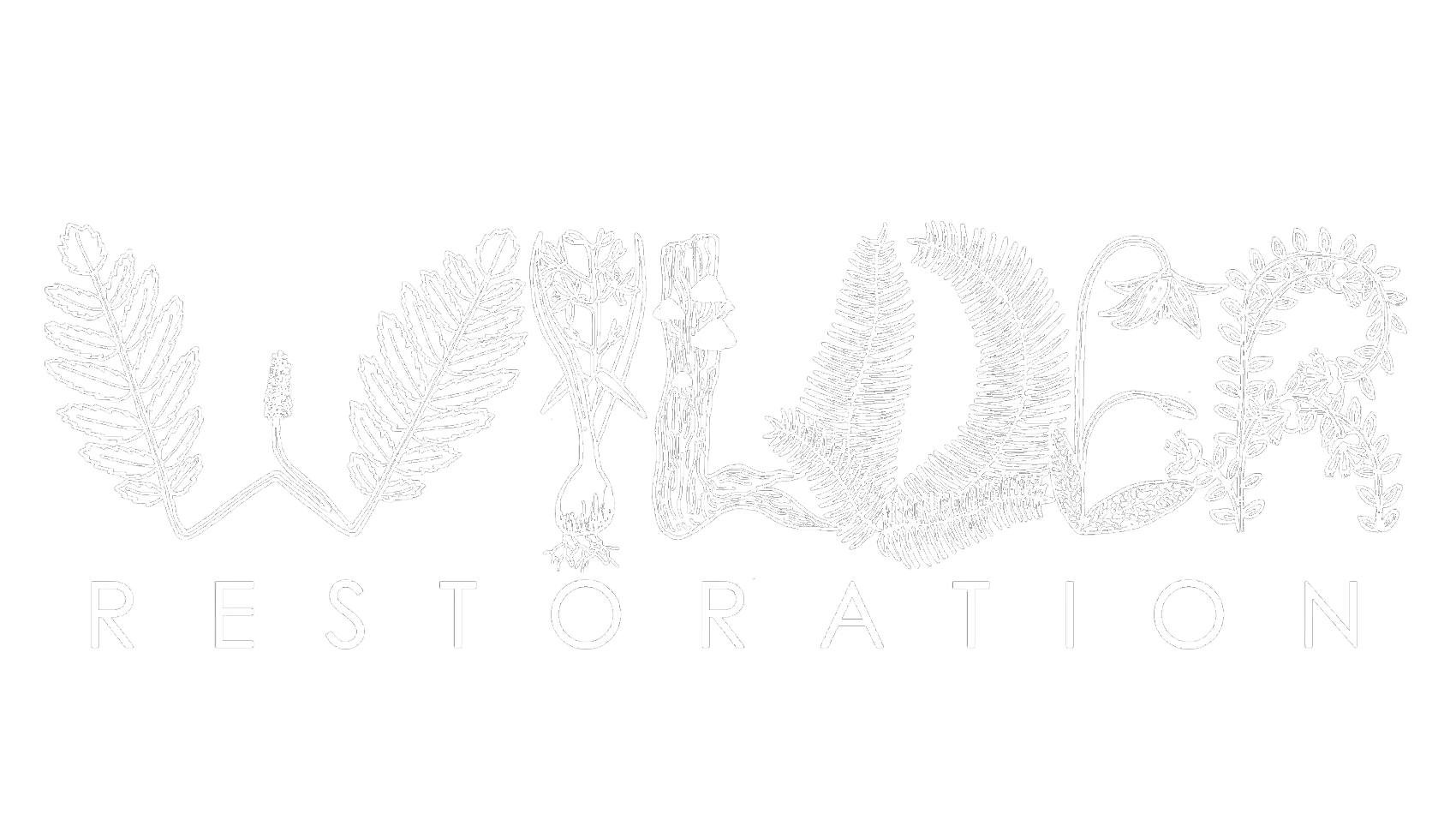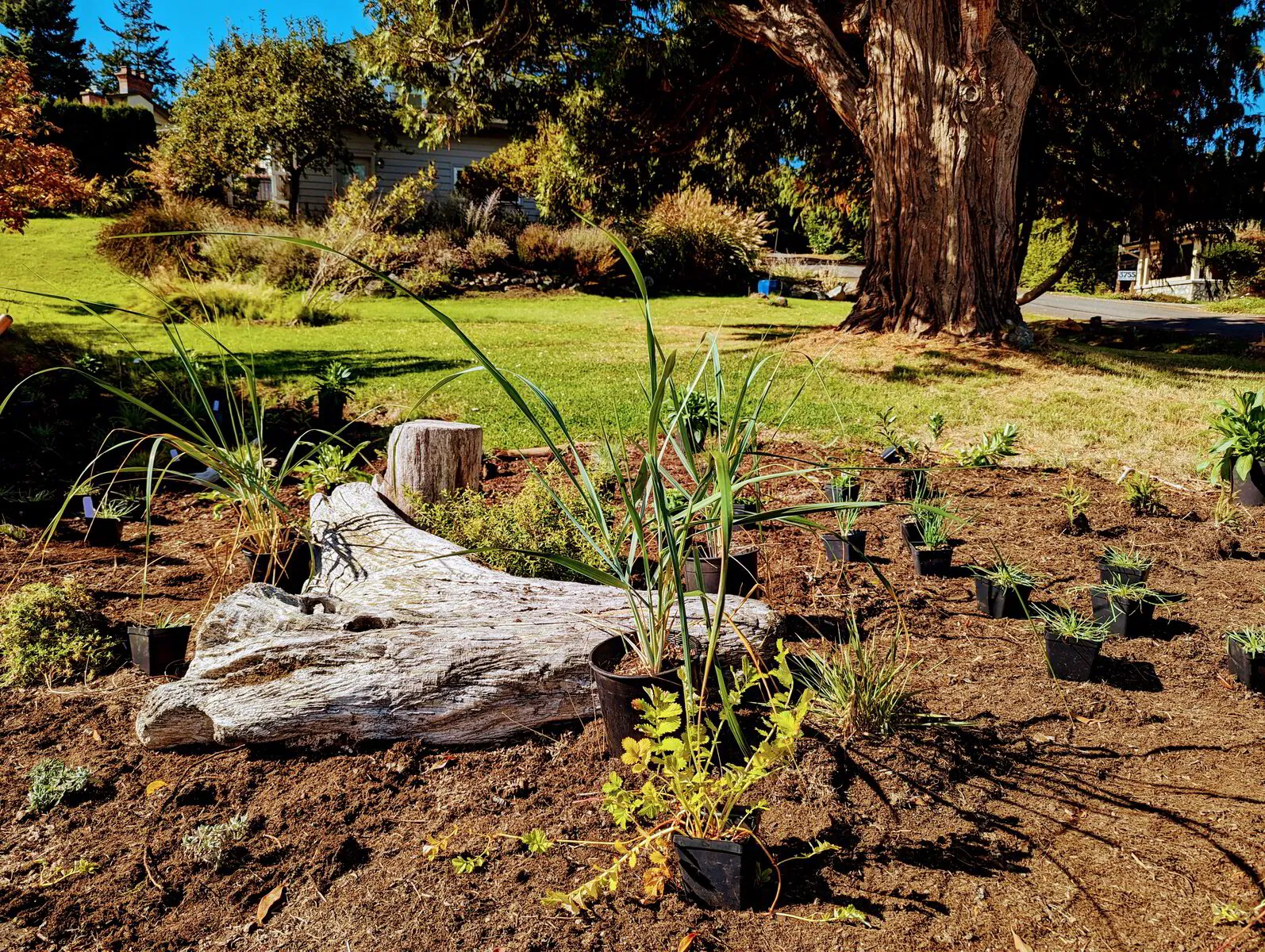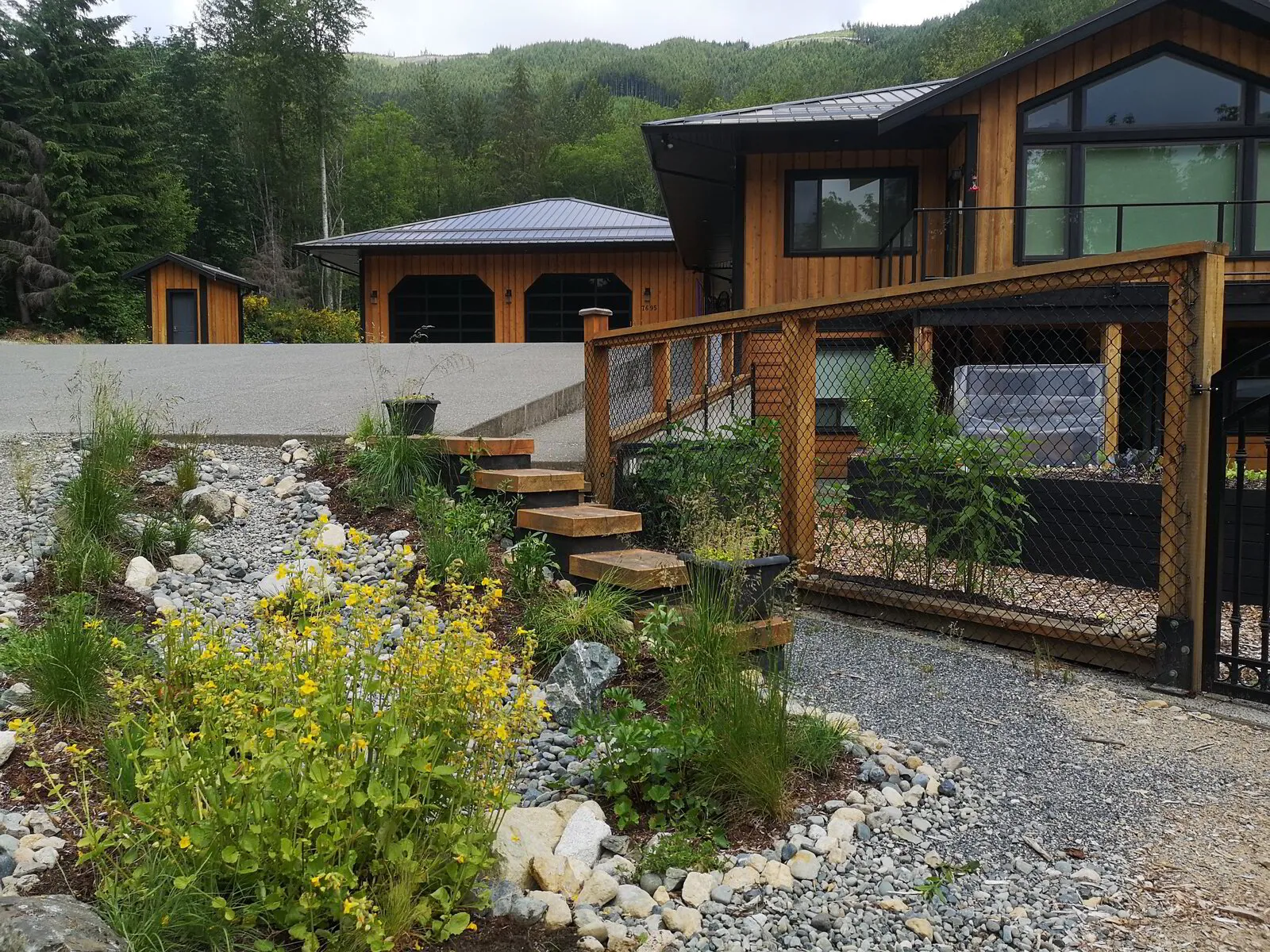Sustainable Landscape Design
70+
Projects Completed
3.7
acres of restoration in progress
4000+
Native plants planted
300+
Yards of invasive plant material removed
We use native plants to build habitats and increase biodiversity while giving you a gorgeous, west coast inspired space that you can be proud of. Native plants are naturally adapted to the wet winters and hot dry summers typically experienced on Vancouver Island, this makes them ideal for creating beautiful, low maintenance landscapes. Due to their adaptability, once established they require little to no water when compared to exotic species, helping to reduce the amount of money you spend on watering throughout the summer. We are so lucky to live in a place with such a huge diversity of species, making it easy to create unique and interesting designs. We love working with you to create the garden of your dreams.
Why Native Plants
Working with native plants gives us the opportunity to create a space that is beautiful but also bountiful. We choose to use 100% native species in our garden designs for several reasons;
- They are coevolved with our native pollinators providing very much needed resources to specialist bees and butterflies.
- They are best adapted to our climate and seasonal extremes which means that they are better equipped to handle our wet winters and hot dry summers with little to no intervention.
- They create and connect habitat- native plants in urban areas can create important habitat for isolated wildlife populations and can create connection and continuity of habitat patches.
- As a conservation action- Planting native species helps to strengthen populations, their range, and their genetics. Planting these plants can help strengthen pollinator success in populations facing decline.
- As an act of decolonization and care for the land and people that have tended to these landscapes for time immemorial.
Garden Design
When designing your garden we consider everything. We want to create a feature that fits into your space and your goals while maximizing its biological potential. We start by gathering information about the site conditions and the clients vision for the space. Next a composition of plants is chosen based on the bloom time, height, habit, texture and function. To create a garden with visual interest year round we incorporate flowering perennials, bunch grasses, and species with evergreen foliage. To extend pollen and nectar forage for as much of the year as possible, we plant species that ensure blooms from spring to late fall. Another common feature of our designs is the use of wood and rocks to create habitat features within the garden.
Stormwater Management
Southern Vancouver Island receives approximately 700 mm-1500 mm of rainfall annually. That rainfall is an essential component to the survival of humans, wildlife and plants as it replenishes our aquifers, maintains our ancient forests, and flows through our salmon baring streams. However, when heavy rains fall on hard surfaces such as pavement, concrete or rooftops, it has no ability to permeate into the ground. This surface runoff picks up pollutants such as heavy metals, fertilisers, and hydrocarbons and transports them down the storm drain and directly into the ocean. This causes harmful effects to our marine life. We can provide several different solutions for capturing, cleaning, and using rainwater such as rain gardens, bio-swales, and rainwater collection/ irrigation systems.
Rain Gardens
Rain gardens are a fantastic way to filter out pollutants from runoff, replenish your aquifer, and provide habitat for birds and insects. Rain gardens consist of a dug down garden bed containing plants, constructed soils and parent soils. Runoff is directed into the garden where it can pool and slowly infiltrate through the constructed soils to the parent soil, while the vegetation works to filter pollutants from the runoff. There are many different types of rain gardens depending on the needs and conditions of the site. A site visit to asses soil conditions, slope, and volume will allow us to determine the exact right type of rain garden for your space.
Bioswales
Bioswales are similar to rain gardens and can be both vegetated and non-vegetated, with the main difference being a sloped base to facilitate the movement of larger volumes of water. These can be used to replace traditional ditch drainage systems as they are designed to slow the movement of water to allow for filtration of pollutants and to enable water to permeate into the parent soils. Bioswales can be broken down to grass channels, dry swales, and wet swales.



